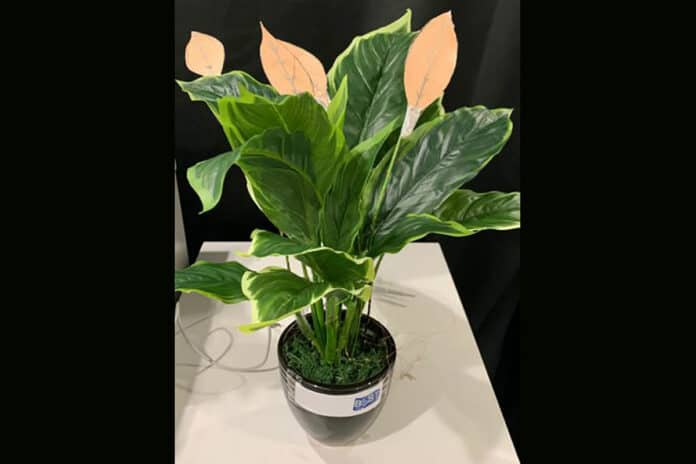Harnessing electrical energy from nature is an innovative way to reduce our reliance on non-renewable sources of energy. The limitations of relying on a single source of energy – like solar or wind – are quite evident, as solar panels don’t work after sunset, for example, and a calm day won’t generate much wind power.
And that’s where multi-source energy harvesters come into play to maximize the potential output. These harvesters can capture energy from different renewable sources in one device.
An international team of scientists led by Prof. Ravinder Dahiya from Boston’s Northeastern University has developed literal “power plants” – tiny, leaf-shaped generators that create electricity from a blowing breeze or falling raindrops. The team tested the energy harvesters by incorporating them into artificial plants.
The team developed two different types of energy collectors – the triboelectric nanogenerator (TENG) to harness energy from the wind and a droplet-based energy generator (DEG) to collect energy from falling raindrops. Both the collectors were created in a visually appealing leaf shape for this particular application.
The TENGs consist of a layer of nylon nanofibers sandwiched between layers of polytetrafluoroethylene, more commonly known as Teflon. When the layers were pressed against one another by the force of wind, static charges were generated and converted into electricity by integrated copper electrodes.
On the other hand, the textile droplet-based electricity generator was also made from Teflon, with waterproofed electrodes made of a conductive fabric. As raindrops hit one of the electrodes, it creates an imbalance in charges and generates a small current and high voltage.
Under optimal conditions, the optimized TENG part of the device can produce 252 volts during contact mode mechanical excitations, and the DEG could generate 113 volts from waterdrops.
The team tested collectors of both types by incorporating their leaf-shaped versions into an artificial plant. When exposed to conditions mimicking natural wind and rain, the leaf-shaped generators produced enough electricity to power 10 LED lights in short flickers.
The researchers state that this proof-of-concept “power plant” device could be further developed into larger systems or networks of power plants to produce clean energy from natural sources.
